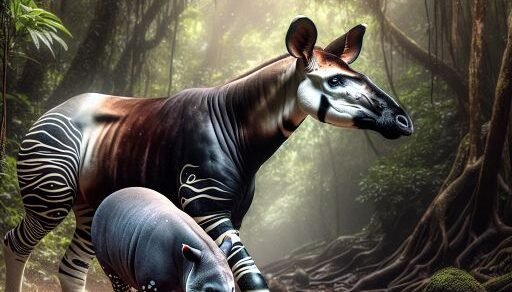Location and Habitat
Camels are iconic desert dwellers primarily found in the arid regions of the Middle East, North Africa, and parts of Asia. These resilient animals are superbly adapted to life in harsh environments, with features like thick eyelashes and wide, flat feet that help them navigate and survive in sandy, hot climates. They are commonly associated with the vast, sandy expanses of the Sahara Desert and the Arabian Peninsula, where they have been domesticated and used for transport and agriculture for thousands of years.
The oryx, on the other hand, is a striking antelope species that thrives in similar arid and semi-arid areas, but is native to Africa and the Arabian Peninsula. Known for their long, straight horns and beautiful contrasting markings, oryxes have adapted to extreme heat and scarce water resources. They are primarily found in protected areas and reserves due to their near-extinction from overhunting in the wild. Key habitats include the grassy plains and sparse woodlands of Namibia, Botswana, and parts of the Middle East, where they continue to be a symbol of endurance and grace in the face of environmental challenges.
Camel vs. Oryx Comparison
| Animal | Size and Weight | Ability to Finish Opponent | Weaponry |
|---|---|---|---|
| Camel | Can weigh up to 1000 kg; height up to 2 meters at the shoulder | Low; primarily uses size for defense | Teeth, strong legs |
| Oryx | Typically weighs 100-210 kg; height around 1.2 meters at the shoulder | Moderate; can use horns effectively in defense | Long, sharp horns |
“`
Hunting and Skills
Camels are primarily herbivores and do not prey on other animals; they are adapted to harsh desert environments where they feed on vegetation such as shrubs and grasses. They have unique physical adaptations like their humps, which store fat, and their ability to close their nostrils during sandstorms. Camels are not typically prey animals but can defend themselves using their size and strength when threatened.
Oryx, on the other hand, are also herbivores and are known for their striking appearance with long, straight horns and a robust build. They inhabit arid to semi-arid regions and primarily feed on grasses, leaves, and buds. The horns of the oryx are not just for show; they serve as a formidable defense mechanism against predators like lions and hyenas. Oryx are also known for their endurance and can run at high speeds to escape predators.
Camel vs. Oryx Who Would Win?
The camel and oryx face off in an open desert setting. The camel, larger and stronger, initially tries to intimidate the oryx with its size. The oryx, agile and quick, dodges the camel’s attempts to strike with its hooves. The oryx uses its sharp horns to jab at the camel, aiming for its legs and underbelly. The camel attempts to retaliate with bites and body slams. As the fight drags on, the camel’s endurance begins to outlast the oryx’s energy reserves. Eventually, the camel’s sheer size and stamina allow it to overpower the oryx.
Winner: Camel with a 65% chance of winning.




